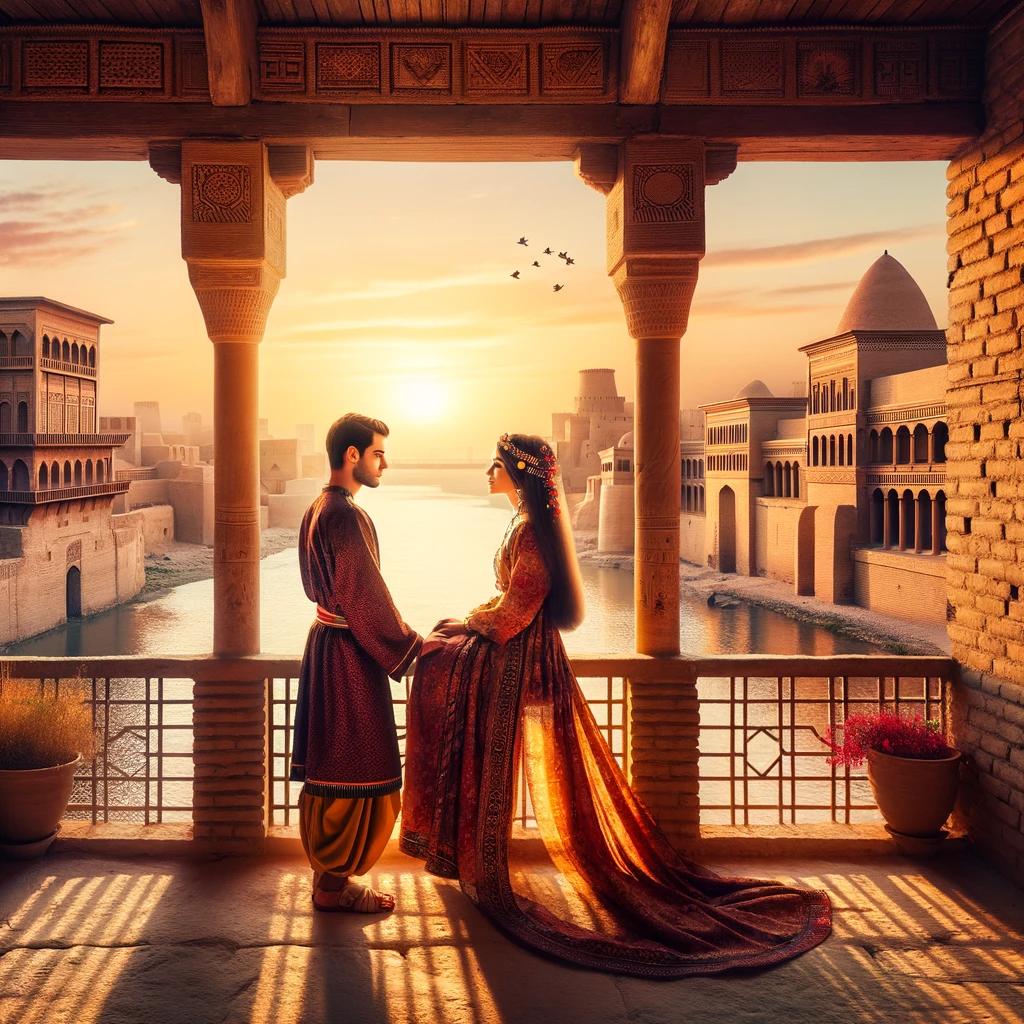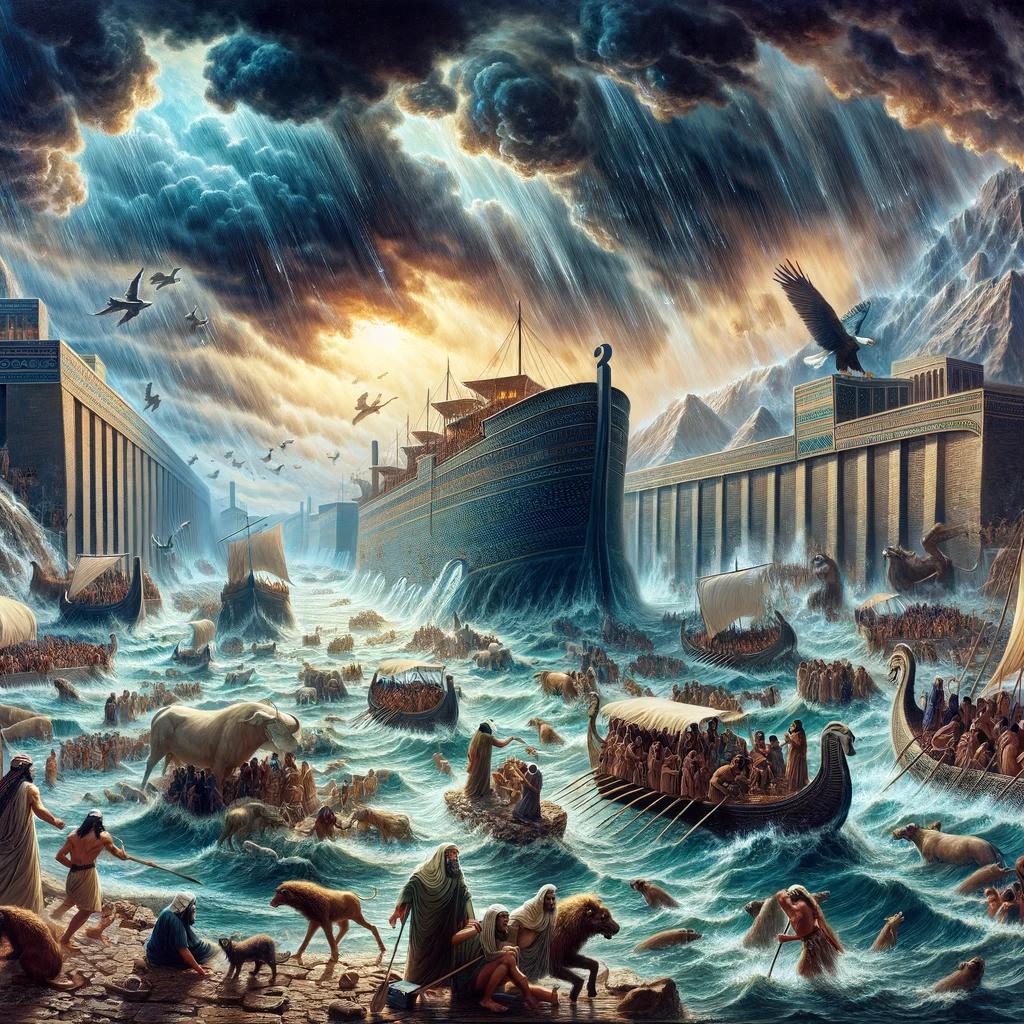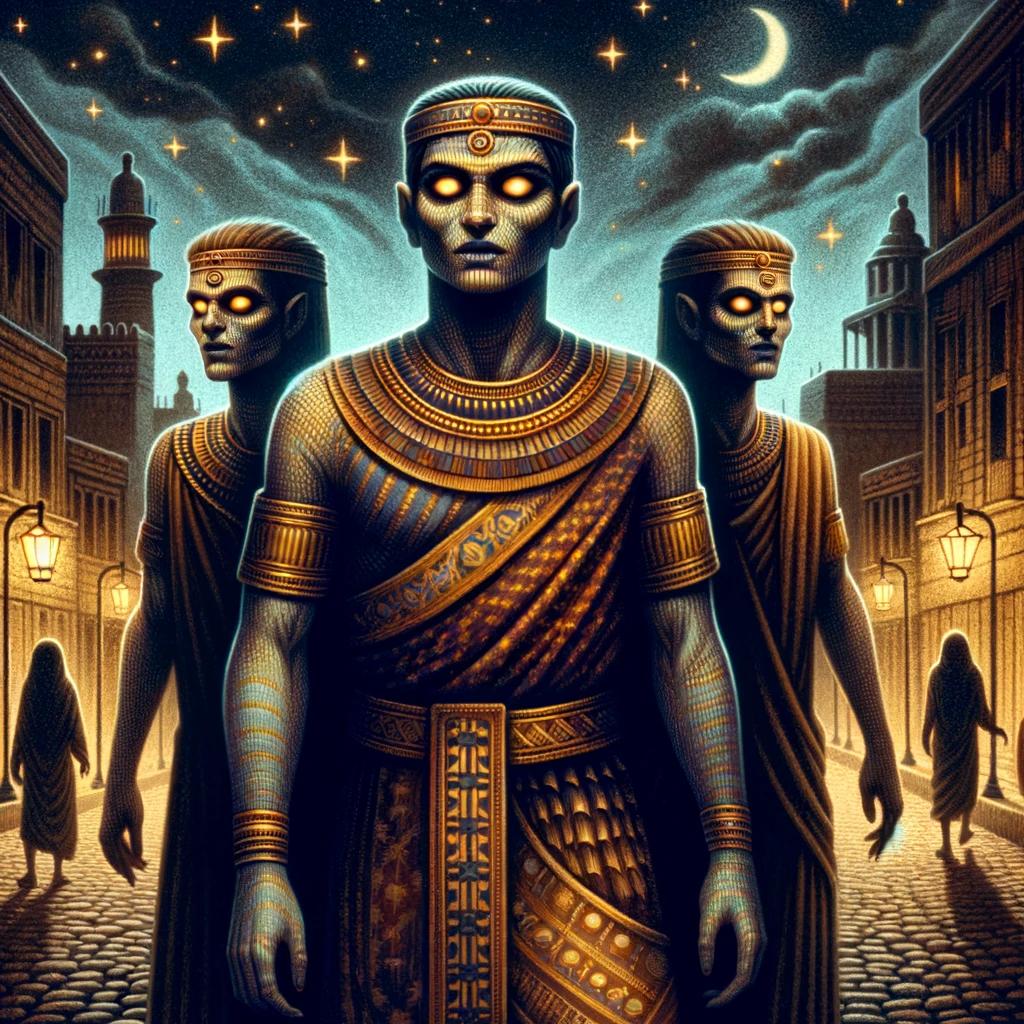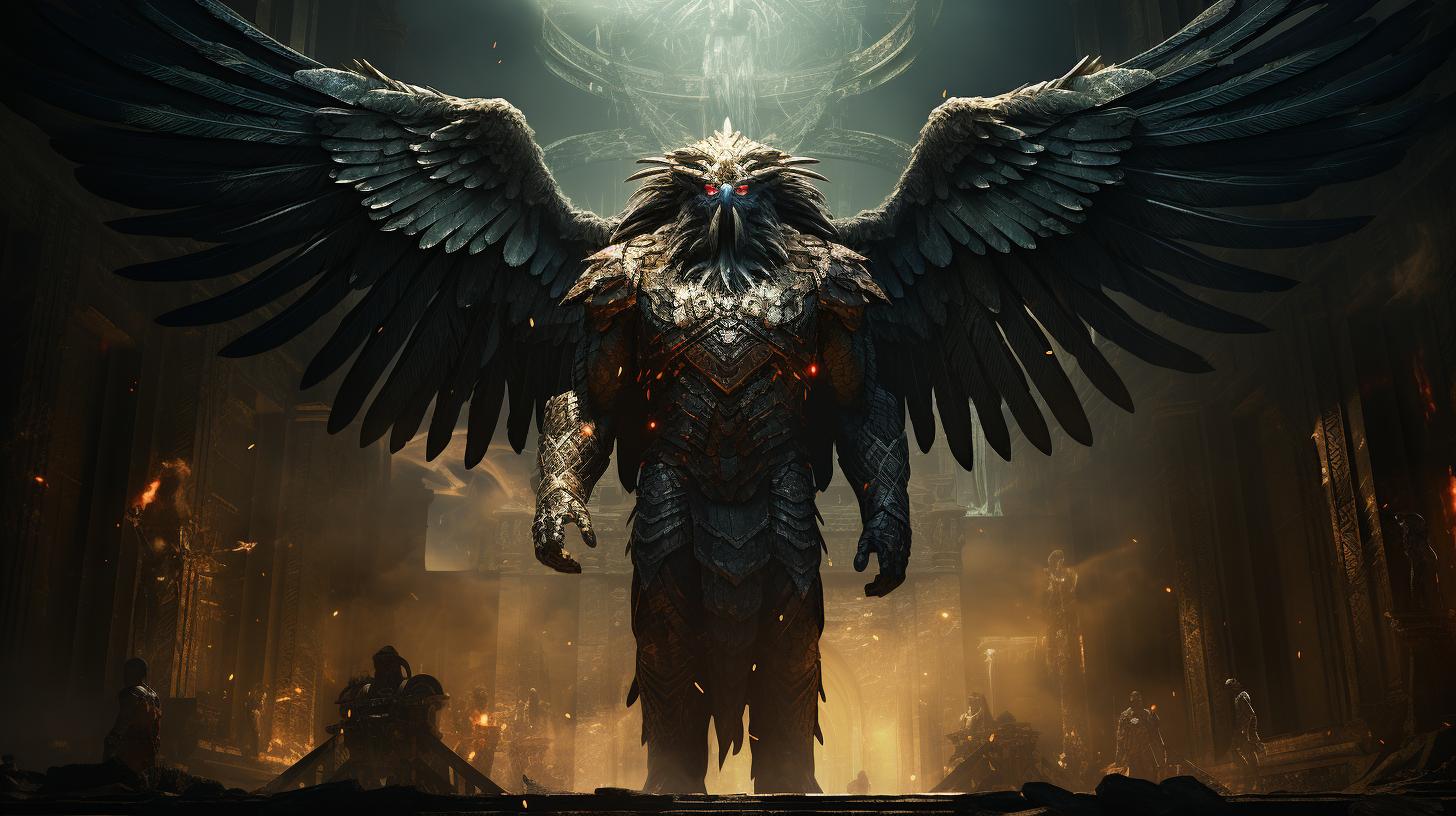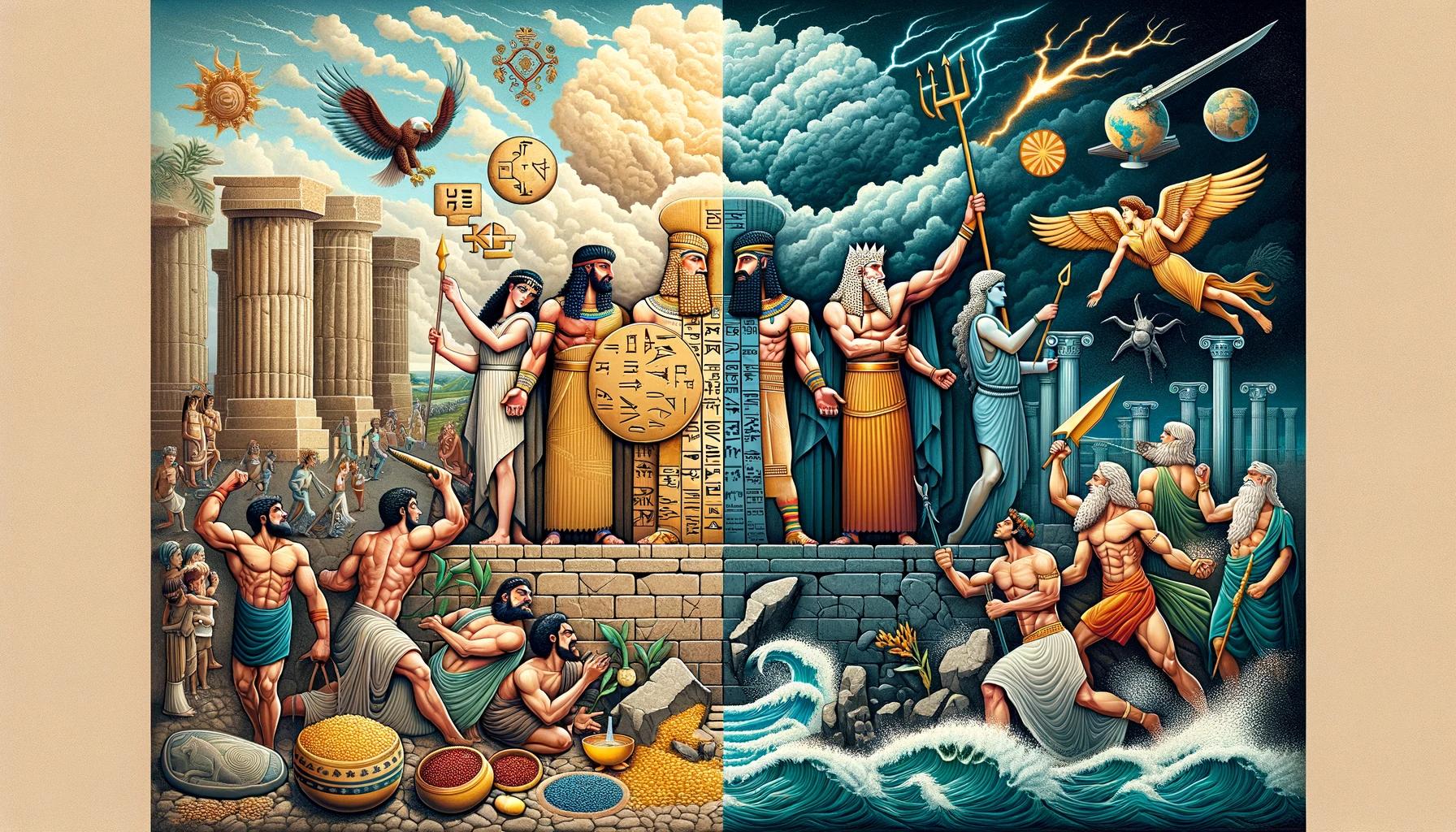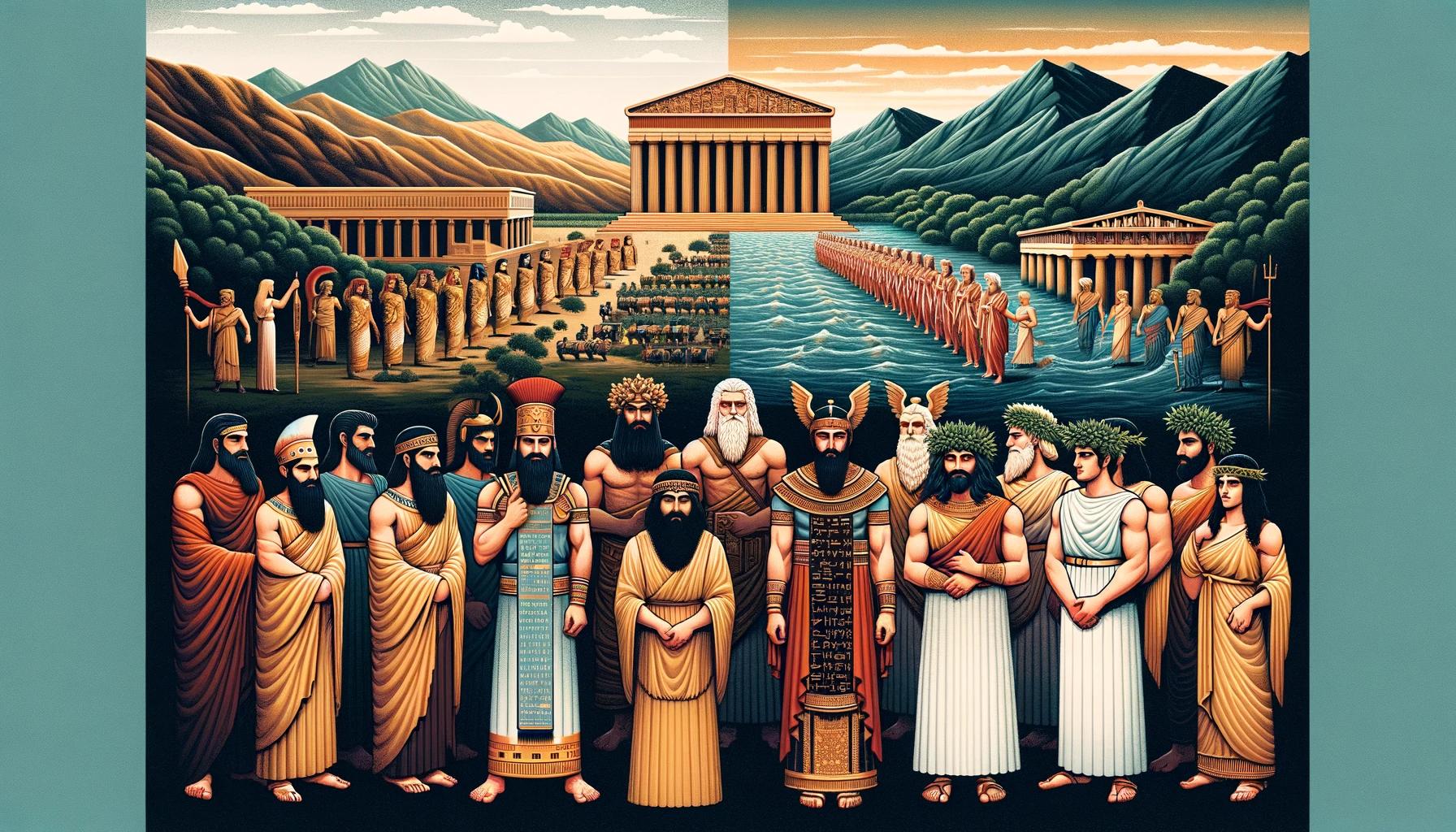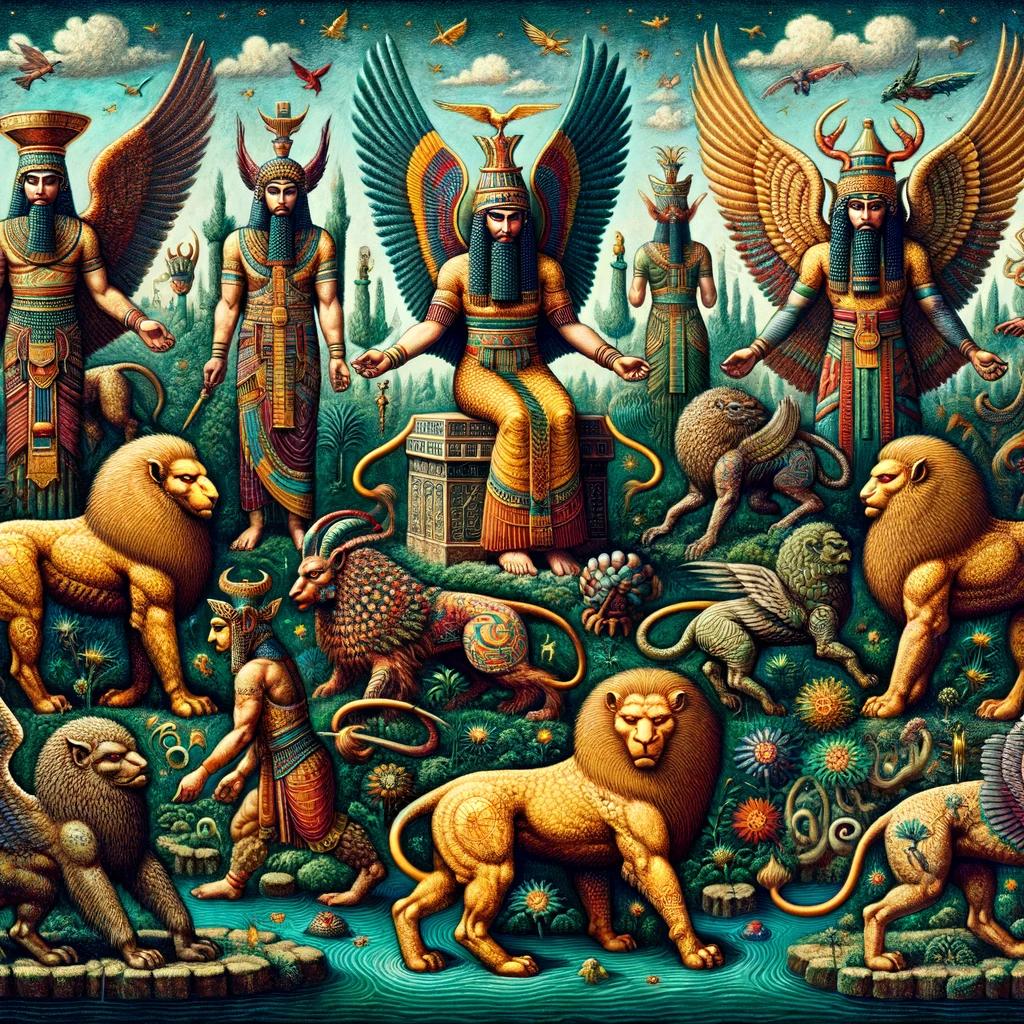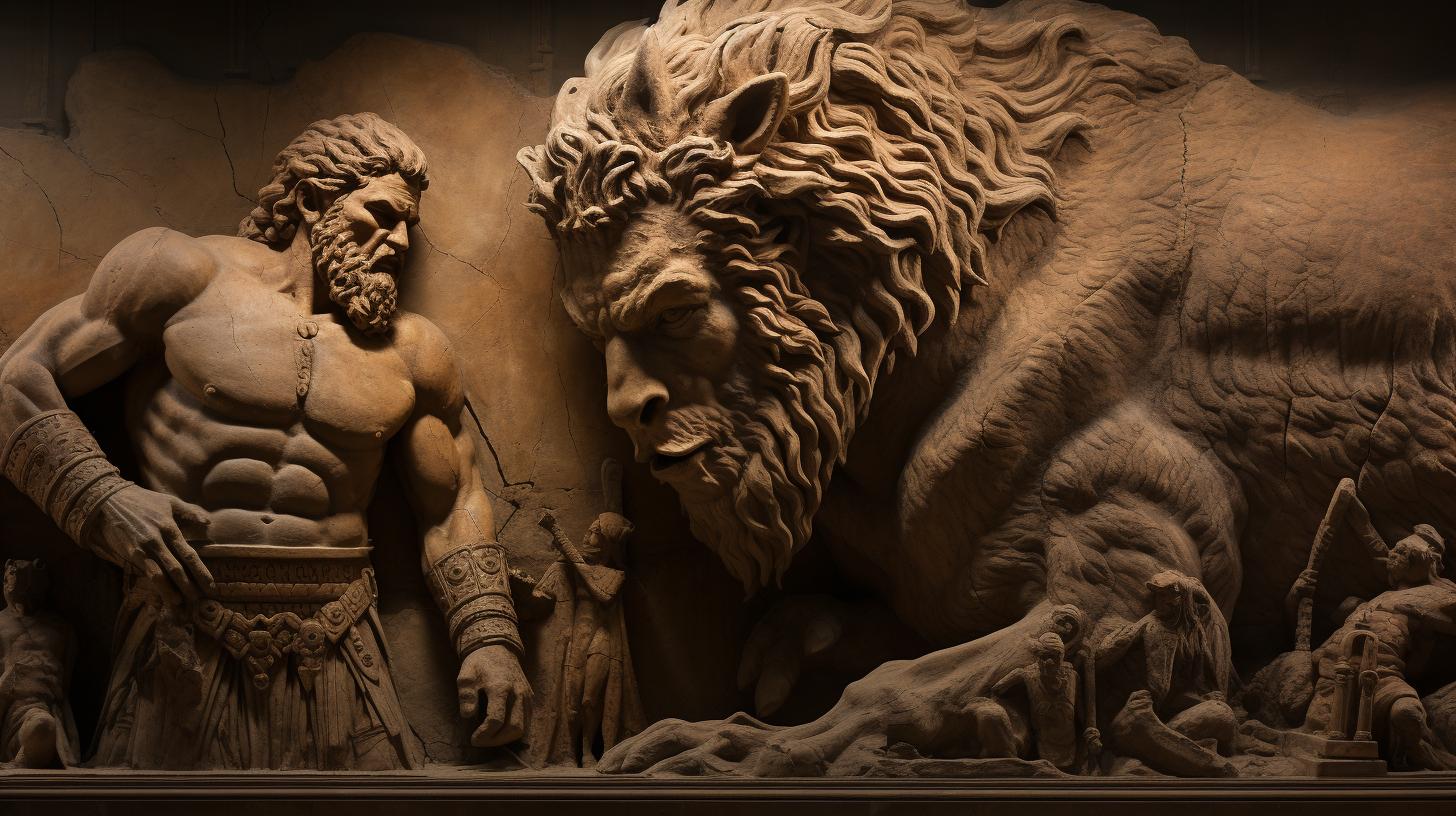Mesopotamian Creation Myths: Exploring the Origins of Gods and Humanity

Mesopotamian Creation Myths are ancient narratives that explain the origins of the world, gods, and humanity in Mesopotamia. These myths, originating from Sumeria, Acadia, and Babylon, were recorded on clay tablets and passed down through generations.
They depict various versions of the world’s creation, often involving a primordial chaos dividing into sky and earth by a powerful deity. Human origins are also explained, with humans created from divine blood or a mix of divine materials.
These myths play a significant role in understanding the complex cosmology and religious beliefs of ancient Mesopotamian civilizations.
Overview of Mesopotamian Religion
Mesopotamian religion was characterized by a rich pantheon of deities and a complex system of beliefs and rituals. The ancient Mesopotamians worshipped a multitude of gods and goddesses, each with their own specific roles and powers.
The pantheon included deities such as Anu, Enlil, Ninhursag, Inanna, and Marduk, among many others. These gods were believed to have control over various aspects of life, including nature, fertility, war, and justice.
Mesopotamian Deities and Pantheon
The Mesopotamian pantheon consisted of different gods and goddesses, each associated with specific domains and worshiped in temples throughout the region. Anu, the sky god, was regarded as the highest deity and the father of the gods.
Enlil, the god of wind and storms, was considered the king of the gods and the ruler of the earth. Ninhursag, also known as the mother goddess, was associated with fertility and childbirth.
Inanna, the goddess of love and war, was one of the most revered deities in Mesopotamia. Marduk, the patron god of Babylon, gained prominence in later periods and became the supreme deity.
Functions and Powers of Gods in Mesopotamian Mythology
In Mesopotamian mythology, the gods were believed to play vital roles in shaping the universe and determining the course of human events. Each deity had specific functions and powers attributed to them.
For example, Enlil was responsible for maintaining order and justice, while Inanna governed matters of love, war, and fertility. Marduk, in addition to being the creator of the world in some myths, also held dominion over civilization, agriculture, and the arts.
The gods were thought to intervene in human affairs, responding to prayers and offering protection and blessings.
Sumerian Creation Myth
The Sumerian Creation Myth is among the earliest recorded narratives of Mesopotamian mythology. It presents a unique perspective on the origins of the world and introduces significant deities in Sumerian cosmology.
This section explores two key aspects of the Sumerian Creation Myth: The Enuma Elish, known as the Babylonian Creation Epic, and the epic battle between Marduk and Tiamat.
The Enuma Elish: Creation Epic of Babylon
The Enuma Elish, a prominent ancient Babylonian poem, provides a detailed account of the creation of the world and the establishment of divine order.
It describes a primordial chaos and the emergence of the gods, with Marduk, the patron deity of Babylon, playing a central role in shaping the cosmos. The Enuma Elish reveals the power dynamics among the gods and narrates Marduk’s ultimate triumph over the primordial goddess Tiamat.
Marduk and Tiamat: Battle for Creation
The conflict between Marduk and Tiamat serves as a central theme in the Sumerian Creation Myth.
Tiamat, personifying chaos in the form of a monstrous dragon, poses a threat to the younger gods. Marduk rises to the challenge and engages in an epic battle against Tiamat, ultimately vanquishing her and using her remains to create the world.
This myth illustrates the triumph of order over chaos and establishes Marduk’s role as the supreme ruler of the gods.
Mesopotamian Myths of Human Origins
In Mesopotamian mythology, the creation of humans holds great significance. According to these myths, humans were not the first beings to inhabit the world; they were created by the gods to serve as their subjects and maintain order in the cosmos.
The Creation of Humans in Mesopotamian Mythology
The myths propose different explanations for the creation of humans. One version suggests that humans were made from the blood of a sacrificed god, while another claims that they were formed from a mixture of divine clay or mud and the blood of the gods.
Regardless of the specific details, humans were considered to be a divine creation, carefully crafted by the gods.
These creation stories seek to elucidate the purpose and origin of humanity, addressing fundamental questions surrounding human existence.
They portray humans as part of a cosmic order, with specific roles and responsibilities within the divine framework.
Roles and Purpose of Humans in Mesopotamian Cosmology
According to Mesopotamian myths, humans were created to serve the gods and participate in rituals and worship. They were expected to offer sacrifices, perform religious rites, and ensure the well-being of the divine realm.
Humans acted as intermediaries between the earthly realm and the gods, bridging the gap between mortals and immortals.
Additionally, humans were tasked with maintaining balance and order in the world. They were entrusted with preserving the sacred rituals, upholding moral values, and contributing to the overall stability of society.
Their actions were believed to directly impact the harmonious functioning of the cosmos.
These myths served as a societal framework, providing guidelines and expectations for human behavior. They emphasized the interconnectedness of humans and the divine, highlighting the importance of fulfilling their prescribed roles and responsibilities.
Overall, Mesopotamian myths of human origins shed light on the intricate relationship between humans and gods. They offer insights into the religious and cultural beliefs of ancient Mesopotamia and provide a unique perspective on the purpose and significance of human existence within the larger cosmological context.
Comparisons with Other Ancient Creation Myths
When examining Mesopotamian creation myths, it is intriguing to explore the parallels and differences between these narratives and other ancient creation myths from neighboring civilizations. The rich cultural interactions in the ancient Near East resulted in shared motifs and exchanges of ideas between various mythological traditions.
Parallels and Differences with Near Eastern Creation Myths
Within the region of Mesopotamia, there are similarities in creation myths across different city-states and cultures. For example, the Enuma Elish, the Babylonian creation epic, shares common themes with other Mesopotamian narratives.
The idea of chaos preceding order, the division of heaven and earth, and the emergence of gods and humanity can also be found in creation myths from ancient Assyria and other neighboring city-states.
However, each civilization had its own unique interpretation and emphasis on specific deities and their roles in creation. Comparing and contrasting these variations sheds light on the diverse perspectives and beliefs within the ancient Near East.
Influences and Interactions with Egyptian and Greek Mythology
The ancient civilizations of Egypt and Greece had their own creation myths that have intriguing points of intersection with Mesopotamian narratives. While these cultures existed outside the immediate geographical area of Mesopotamia, cultural and trade contacts facilitated the exchange of ideas and myths.
There are notable similarities between Mesopotamian and Egyptian creation myths, such as the concept of a chaotic void preceding creation and the emergence of gods from primordial elements. These similarities suggest possible cross-cultural influences or a shared cultural heritage in the broader ancient Near East.
On the other hand, Greek mythology showcases unique creation narratives with gods and primeval forces taking center stage. Their cosmogonies, like the Theogony of Hesiod, portray the emergence of the world from primordial entities and the genealogies of gods and Titans.
By examining the similarities and divergences between Mesopotamian creation myths and those from Egypt and Greece, we gain a deeper understanding of the interconnectedness and shared mythological motifs in the ancient Mediterranean world.
In conclusion, comparing Mesopotamian creation myths with those from neighboring civilizations like Egypt and Greece helps us appreciate the rich tapestry of ancient cosmogonies. The similarities and differences provide valuable insights into the complex interplay of religious, cultural, and intellectual exchanges in the ancient past.
The Epic of Gilgamesh and its Connection to Creation Myths
Gilgamesh, the legendary Sumerian king, embarks on a quest in the epic poem known as the Epic of Gilgamesh. This epic holds a significant connection to the Mesopotamian creation myths and explores themes of immortality and mortality prevalent in Mesopotamian mythology.
Themes of Immortality and Mortality in Mesopotamian Mythology
In Mesopotamian mythology, immortality was seen as the ultimate desire for humans, offering eternal life and freedom from death’s grasp. However, the gods held the monopoly over immortality, and mortals had to face the inevitable fate of death.
This theme is vividly portrayed in the Epic of Gilgamesh as the main character, Gilgamesh, seeks a way to escape mortality and acquire eternal life.
Gilgamesh’s Journey and Quest for Eternal Life
Gilgamesh’s journey takes him to various places, encountering challenges and seeking answers to his desire for immortality.
He first meets Utnapishtim, the only human granted immortality by the gods. Utnapishtim shares his story of surviving a great flood and receiving eternal life as a reward. However, Gilgamesh fails to attain immortality as Utnapishtim challenges him to stay awake for six days and seven nights, which Gilgamesh ultimately fails.
Gilgamesh’s quest for eternal life further reveals the futility of human attempts to overcome the inevitability of death. As he returns home, he accepts his mortality, understanding the importance of leaving a lasting legacy through his actions and contributions to society.
This connection between Gilgamesh’s journey and the quest for eternal life highlights the presence of the creation myth’s underlying beliefs in Mesopotamian culture. It serves as a reminder to individuals of their mortal nature and the significance of embracing one’s humanity while striving for greatness.
In conclusion, the Epic of Gilgamesh explores the connection between Gilgamesh’s journey and the themes of immortality and mortality present in Mesopotamian creation myths. Through the protagonist’s quest for eternal life, the poem highlights the human longing for immortality and the inevitability of death.
This connection emphasizes the cultural and religious significance of Mesopotamian creation myths in shaping the worldview of ancient Mesopotamians.
Significance and Legacy of Mesopotamian Creation Myths
Influence on Ancient Mesopotamian Culture and Society
The Mesopotamian creation myths had a profound impact on the culture and society of ancient Mesopotamia. These myths shaped the religious beliefs and practices of the people, providing a foundation for their understanding of the world and their place in it.
The belief in multiple gods and their roles in the creation and order of the cosmos were central to Mesopotamian religious life.
The creation myths influenced various aspects of ancient Mesopotamian culture, including art, literature, and architecture.
Depictions of the gods and the creation stories adorned temples, sculptures, and reliefs. The myths were also incorporated into religious ceremonies, rituals, and festivals, serving to reinforce the connection between the gods, the people, and the natural world.
Beyond religious practices, the creation myths influenced Mesopotamian social structures and political systems. The belief in divine authority and the gods’ control over the world informed the hierarchical structures of society, with rulers often claiming divine legitimacy.
The concepts of justice, order, and obedience to the gods were deeply ingrained in the societal norms and laws.
Relevance and Interpretations of Mesopotamian Creation Myths Today
The legacy of Mesopotamian creation myths extends far beyond ancient times. Today, these myths continue to be studied, analyzed, and interpreted by scholars, archaeologists, and historians to gain insights into the ancient Mesopotamian worldview.
The myths offer valuable insights into the development of human thought, cosmology, and religious beliefs. By examining the creation myths, we can better understand the ways in which ancient Mesopotamians perceived and explained the origins of the world, the gods, and humanity.
These interpretations shed light on the intellectual and cultural achievements of ancient Mesopotamia and contribute to our broader understanding of human history and mythology.
Furthermore, the themes and motifs found in Mesopotamian creation myths resonate with contemporary society.
Concepts of power, order, and divine authority explored in these myths continue to be relevant in discussions of religion, politics, and social structures. The enduring legacy of Mesopotamian creation myths serves as a reminder of the enduring human fascination with the divine and our ongoing quest for understanding our place in the world.
As we delve into the significance and legacy of Mesopotamian creation myths, we uncover a rich tapestry of cultural and intellectual heritage, offering us not only a glimpse into ancient Mesopotamia but also a deeper understanding of our shared human experience.
.











